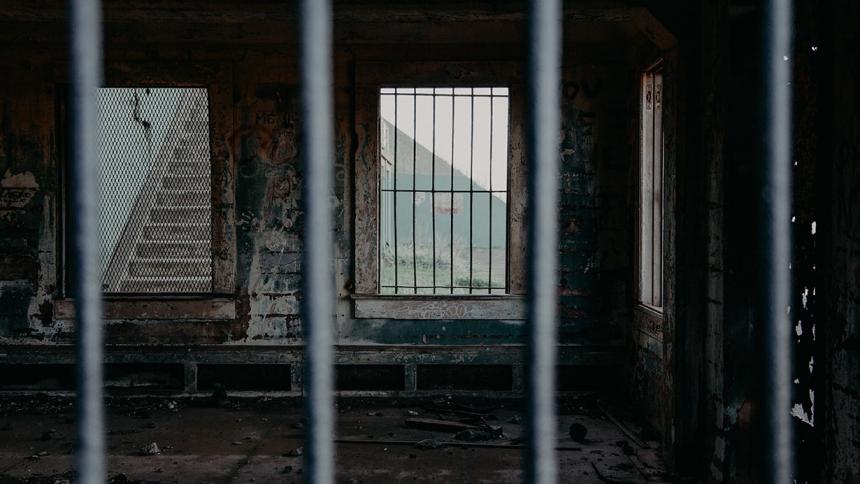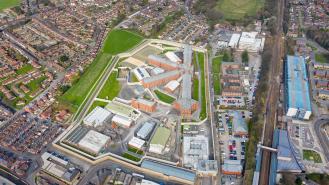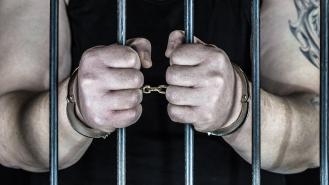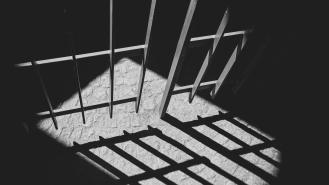
The most dangerous prisons in the world
There are three main reasons why prisons exist: to rehabilitate, to punish and to contain. Which is the primary function? Well, your answer to that will likely depend on your politics and outlook on the world.
However you look at the ethics of imprisonment, penitentiaries are unavoidable in any reasonable civilised society. It could even be argued that societies are kept reasonable and civilised because of prisons. After all, without them, the world would undeniably be a far more dangerous place.
The trouble is, that danger doesn’t go away. It simply moves. When hundreds - or even thousands - of hardened and violent career criminals are herded together and made to share a roof, that building becomes an incredibly perilous and high-risk place to be…
The following are some of the most dangerous prisons in the world:
The National Penitentiary - Comayagua, Honduras
We start, rather incongruously, with a prison that no longer exists. But rather than the Honduran National Penitentiary being shut down for budgetary reasons like Alcatraz or because it was blown up by religious fundamentalists like the infamous Syrian prison Tadmur, it closed due to a tragic accident.
Before Valentine’s Day 2012, the jail in Comayagua, a city some 50 miles northwest of the capital Tegucigalpa, was dangerous enough. Home to well over 800 thieves, rapists and murderers, the place lived up to its reputation. Prisons in Central America are not exactly known as holiday resorts.
The evening of February 14th saw an all-new reason to describe the Comayagua jail as Hell… A fire that quickly raged out of control. In total, 361 of the 856 listed prisoners would die (hundreds of others escaped in the carnage). It goes down as the deadliest prison fire ever recorded.
Investigations afterwards found no definite reason for the fire, but a combination of gang warfare and poor electrics most likely combined to terrible effect. The president of the Prison Fellowship International had previously visited Comayagua and called it ‘one of the worst prisons in the world’.
Why are Central American jails so bad? Well, gang violence is beyond rife, for starters. But there's more to it than that. In Honduras, a full 97% of most prison budgets are spent on warders’ salaries and the prisoners’ food. That leaves a pathetically small amount left over to spend on making conditions safe, sanitary and liveable. And so, chaos reigns.
Petak Island Prison, Vologda, Russia
The tiny island of Ognenny Ostrov (which translates rather ominously as 'Fire Island') sits deep in the middle of a vast lake in the heavily forested Vologda region of Russia. It's an incredibly remote and desolate area of the country, equidistant between the enormous country's capital Moscow and the foreboding tundras of the Arctic Circle.
Strange place for a prison then, you’d think. Well, yes and no. Petak Island Prison comes with its practical and logistical issues of course. But in terms of breakouts? Well, they just don’t happen.
Petak is colloquially known as ‘The Russian Alcatraz’, but it’s much bleaker and infinitely more outlying than The Rock. The geography is also its psychology. Just knowing where they’re located breaks the inmates’ spirit. And if that doesn’t, 23 hours a day in lockdown does. That solitary hour they’re afforded of yard time is spent standing in a cage barely big enough to allow them to pace, out in the freezing cold.
Amenities simply don’t exist. Their toilet is a steel bucket, their bed a wooden plank.
The hazards here don’t come from revolting prisoners, guard violence, escapes, violence or rape. It’s much more low key but possibly even more dangerous. The dangers are purely in the mind. Petak Island Prison absolutely destroys the mind of anyone sentenced to serve time there.
General Penitentiary of Venezuela (PGV), Guárico, Venezuela
Venezuela is having a tough time as a country at the moment and has done for some years now. Prisons and prisoners are not exactly top of the list of the bankrupt nation’s priorities right now.
With Central America’s infamous gang culture still rife, the ‘PGV’ facility is entirely overrun. It’s like no other prison on Earth. This is less a jail and more a miniature city. It’s so overcrowded that guards and prison officials have effectively abandoned it, leaving it to effectively police itself. And that’s only ever going one way…
The most violent and dominant criminals rule the roost. The black market is now very much an open market, guns trade hands, as do drugs and even some rather jaw-dropping items like grenades. Music festivals are held, wives, girlfriends and sex workers come and go freely and there’s virtually no sanitation. One recent documentary crew infiltrated the place and described it as ‘a war zone’.
Oddly, some say that the prison is safer and runs better since the gangs took control. Hierarchical criminality strikes fear into the hearts of cons far more than an underpaid civil servant with a baton. Still, it’s an incredibly intimidating and dangerous environment.
Those are just some of the planet’s truly shockingly depressing, violent and dehumanising prisons. It doesn’t have to be that way, though…
Ny Anstalt, Nuuk, Greenland
Greenland’s Ny Anstalt correctional facility may also find itself shiveringly close to the Arctic Circle, but that’s where comparisons to Russia’s Petak Island Prison begin and end. For this jail, in Greenland’s capital Nuuk, is what’s known as a ‘humane prison’. It’s the new breed.
Punishment isn’t on the agenda, the core tenet here is rehabilitation through positive design. The aim is to reeducate inmates and facilitate their reintroduction back into society. The prison is designed not to be prison-like, opting instead to attempt to ape real life as much as possible.
The prison is open, meaning some prisoners can leave for work outside of the facility. It’s also designed aesthetically. The reason being is that there’s a deeply-held belief in Scandinavia that peace and civilisation is attained through experiencing beauty.
Of course, Greenland doesn’t face the same socio-economic issues as a lot of other countries. So while it’s easy to point to Ny Anstalt and wonder why developing countries with widespread criminality aren’t doing the same, the issue goes deep.
Surely something can be done to improve these desperate places, though? Not only for those living imprisoned in them, but for the society they’re being kept away from too…?









